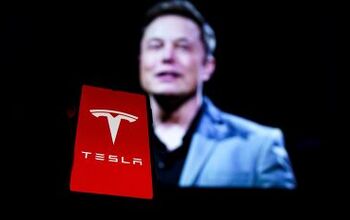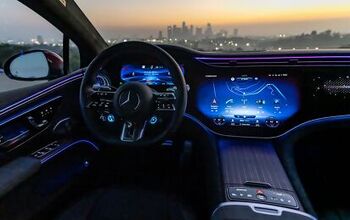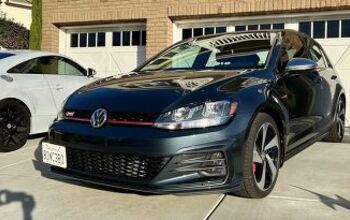The Making Of The Lexus LFA Supercar: Who, What, Where And Most Of All Why. An Inside The Industry Report, Chapter 1: From A Bar To Bar None

The autoclave. A giant pressure cooker that limits the Lexus LFA production to one per day
Behind a nondescript garage door in the Motomachi plant in Toyota City is LFA Kobo, the LFA Works. Here, 170 men and women chase the holy grail of car making. Their mission: How to make a car super fast, super light, super safe, and affordable. They have mastered the first three. On the affordable they are still working. The holy grail is being chased in a supercar, the $375,000 Lexus LFA.
LFA Chief Engineer Haruhiko Tanahashi
Until today, this door was closed to the media. One magazine, Japan’s Car Graphic, was lucky to be invited in 2010 when the workshop still geared up for work. After series production started in December of that year, access to the LFA Works was limited to a privileged few. To be admitted, serious amounts of money had to change hands. The buyer of a $375,000 LFA was offered a tour of the premises – strictly without camera. Today, this veil is about to lift. In a five day series, we will show how the LFA is made, who makes it, and most of all, why.
At the door, I am greeted by Haruhiko Tanahashi. Tanahashi is Chief Engineer of Toyota Motor Corporation’s Lexus Division, and he is the proud father of the LFA. Ever the proud father, he likes to talk about the birth of his child.
It started in a bar.
The Lexus LFA was born where many great ideas come to life:
In a bar.
“My boss and I sat in a bar in Hokkaido,” remembers Tanahashi, “and I told my boss about the dream I had. I wanted to make the ultimate sports car.” At this point, bosses usually call for the check, or the submitter’s personnel file. Tetsuo Hattori, at the time the top vehicle engineer at TMC, replied “why not” – and ordered another round in celebration.
“February 10, 2000. – In Shibetsu, Hattori approves study of a real sports car.” So reads the first entry in Tanahashi’s diary that until this day chronicles the development of the LFA. In sparing sentences, kept on an Excel spreadsheet, Tanahashi follows the incubation, birth and first steps of his life dream.
After receiving a nod from his boss, Tanahashi did not waste time and did not want to risk a change of mind at his superiors. A month after the bar visit, the diary shows the first meeting of a quickly assembled working group.
Satellite view of Shibetsu Proving Grounds
“Baby sports cars are bad.”
On July 6th, Tanahashi is back in Shibetsu.
Shibetsu is where Toyota has its proving ground. Up at the northern end of Japan, and only 400 miles from the shores of Siberia, Shibetsu provides long cold winters and short, temperate summers. It also is far away from prying eyes.
“July 6, 2000. Evaluation drive in Shibetsu” says the diary. “Director says baby sports cars are bad.” This will be a grown-up sports car.
A year after the decision in the Hokkaido bar, the team arrives in Shibetsu with a first prototype for winter testing. The prototype is made from aluminum alloy, and aluminum alloy remains the chosen material all the way through 2005. Many more sports cars were driven across many tracks. First contact with a carbon-fiber monocoque car was made when the team tests a McLaren F1, but Tanahashi decides to stick with the aluminum he knows than to go with the carbon fiber he doesn’t.
First concept of the LFA
In 2005, Tanahashi’s project was still under a tight cover. It also was a favorite target to be killed.
Every year, the project had a near-death experience. “Each fall, there is a big company review at TMC,” says Tanahashi and polishes his wire-rimmed glasses in thought. “Each year, we were about to be kicked off the cliff. Our sports car featured prominently on the list of projects to be killed.”
Hugely expensive and with no promise for profits, it was an inviting target no controller could resist.
The LFA remained alive because it always found a savior amongst Toyota’s top brass. “The timing was right,” says Tanahashi, “Toyota was on a steady rise and very successful.” A few years later, the project would have been stillborn.
Workers fit carbon fiber fender to LFA
The carbon decision.
In the spring of 2005, Tanahashi was agonizing over a tough decision. The LF-A had been shown as a concept at the Detroit Motor Show where it had caused dropped jaws. The car had been on the Nürburgring in Germany with good results – and of course it was caught by paparazzi. In 2005, the car was not too far from final.
However, the car was made from aluminum alloy. To this day, carbon fiber reinforced polymer (CFRP) is used only sparingly, even on the world’s most expensive cars. The Bugatti Veyron comes standard with carbon fiber disc brakes, a few one-offs have carbon fiber body panels. A BMW M3 may have a carbon fiber roof, an Aston Martin DBS may sport a few carbon fiber parts. Tanahashi was not averse to using some CFRP for body panels, or maybe for the LF-A’s bathtub, but he wanted to otherwise stick with aluminum alloy.
Then, Tanahashi hit a wall. The benchmark for the LF-A was the Nürburgring Nordschleife, that part of the Eifel racetrack in Germany that separates real sports cars from also-rans and dragsters. To get the car around the track faster, it had to shed weight, but Tanahashi was out of options. Making most of the car from CFRP promised a weight savings of 220 lbs, but CFRP was insanely expensive, and the change would have thrown the development of the car back by years. Most of all, CFRP was an unknown quantity.
In 2003, a development team at Toyota had begun research on CFRP. First results looked promising, but not much more. Trading the known entity of aluminum alloy for promises was a gamble Tanahashi was not willing to take. Then, something horrifying happened.
“Okamoto-san tapped me on the shoulder, and said, get over it, just go with carbon fiber,” Tanahashi recalls.
The LFA consists of 65 percent carbon fiber and 35 percent aluminum
Kazuo Okamoto was R&D Chief at Toyota. He had another shock in store for Tanahashi:
“He did not just say to make most of the car out of CFRP. He said I should bring the whole CFRP production in-house.”
Toyota does the opposite of many global companies. At Toyota, the mantra is insourcing. “Our company culture is to bring all important functions in-house,” explains Tanahashi.
This worried him a lot. CFRP is a young art and science. Some of it literally is black art. Know-how is scarce. Specialist companies are bought just to get to that know-how. Yet, Tanahashi was told to develop it all in house, and yesterday.
His dream of a sports car was to be ready in a few years, and Toyota had barely done two years of research into CFRP. Tanahashi was not just back to square one. He found himself back to a square somewhere in minus 10 territory.
Tanahashi shows the different grades of carbon fiber used in the LFA
Time is money.
Tanahashi did cast around for help. He discussed his predicament with engineers of Fuji Heavy Industries, and they basically told him that the plan was insane. “That engineer would normally budget 10 years just for the research,” reminisces Tanahashi. “We did it all in one year.”
“The ideal material for a car body is very strong and very light,” says Tanahashi, “but usually, these parameters are at odds with each other. If you want both strong and light, if you need high rigidity and low weight at the same time, then you have no other choice than CFRP.”
However, when you think you have the strength and weight conundrum solved by using carbon fiber to build your car, you quickly run into an especially nasty problem:
Money.
Carbon fiber composites are some of the most expensive materials used in car making. Not because the ingredients used in CFRP are particularly dear. It is because CFRP parts take an inordinately long time to produce. A stamping machine can produce a metal car part in seconds. A similar part made from CFRP can take a day. The autoclave, a giant pressure cooker in the LFA Works, is the only machine there that runs day and night, and nevertheless, it only has the capacity for one car per day.
The orange hood protects the oil cooler during assembly.
Time is money, and CFRP uses way too much time. Even a moderately sized car factory can churn out 1,000 cars per day. The factory does not have the time to wait all day for a part to be ready. Running 1,000 giant autoclaves and 1,000 expensive sets of dies and molds in parallel is likewise out of the question.
Suiting up for the cleanroom
This becomes quickly obvious as we enter the heart of the CFRP manufacturing process. We stand in front of a clean room that is used to build the strongest parts of the LFA. Brain surgeons suit up in a more casual manner than our small group. We don coveralls, shoe booties, hats. This is not for our protection. The intricate parts that are produced behind the airtight doors are being protected from us. We get vacuumed for dust. While our small group suits up, let us use the time for a quick course on CFRP.
Stay tuned for tomorrow’s installment of The Making Of The Lexus LFA:
Monday, July 9: From A Bar To Bar None. How the LFA was born, and why it is made from carbon fiber.
The autoclave. A giant pressure cooker that limits the Lexus LFA production to one per day
LFA Chief Engineer Haruhiko Tanahashi
Satellite view of Shibetsu Proving Grounds
First concept of the LFA
Workers fit carbon fiber fender to LFA
The LFA consists of 65 percent carbon fiber and 35 percent aluminum
Tanahashi shows the different grades of carbon fiber used in the LFA
The orange hood protects the oil cooler during assembly.
Suiting up for the cleanroom

Bertel Schmitt comes back to journalism after taking a 35 year break in advertising and marketing. He ran and owned advertising agencies in Duesseldorf, Germany, and New York City. Volkswagen A.G. was Bertel's most important corporate account. Schmitt's advertising and marketing career touched many corners of the industry with a special focus on automotive products and services. Since 2004, he lives in Japan and China with his wife <a href="http://www.tomokoandbertel.com"> Tomoko </a>. Bertel Schmitt is a founding board member of the <a href="http://www.offshoresuperseries.com"> Offshore Super Series </a>, an American offshore powerboat racing organization. He is co-owner of the racing team Typhoon.
More by Bertel Schmitt
Latest Car Reviews
Read moreLatest Product Reviews
Read moreRecent Comments
- EBFlex Interesting. We are told there is insatiable demand for EVs yet here is another major manufacturer pivoting away from EV manufacturing and going to hybrid. Did these manufacturers finally realize that the government lied to them and that consumers really don’t want EVs?
- Kwik_Shift_Pro4X What's worse than a Malibu?
- MaintenanceCosts The current Malibu is poorly packaged; there's far more room inside a Camry or Accord, even though the exterior footprint is similar. It doesn't have any standout attributes to balance out the poor packaging. I won't miss it. But it is regrettable that none of our US-based carmakers will be selling an ordinary sedan in their home market.
- Jkross22 You can tell these companies are phoning these big sedans in. Tech isn't luxury. Hard to figure out isn't luxury.This looks terrible, there are a lot of screens, there's a lot to get used to and it's not that powerful. BMW gave up on this car along time ago. The nesting doll approach used to work when all of their cars were phenomenal. It doesn't work when there's nothing to aspire to with this brand, which is where they are today. Just had seen an A8 - prior generation before the current. What a sharp looking car. I didn't like how they drove, but they were beautifully designed. The current LS is a dog. The new A8 is ok, but the interior is a disaster, the Mercedes is peak gaudy and arguably Genesis gets closest to what these all should be, although it's no looker either.
- Ajla My only experience with this final version of the Malibu was a lady in her 70s literally crying to me about having one as a loaner while her Equinox got its engine replaced under warranty. The problem was that she could not comfortably get in and out of it.













































Comments
Join the conversation
Except the LFA didn't best the ACR at the ring. As a matter of fact the LFA doesn't seem to best anything. If the car didn't spend so much time in development it would've been relevant but now its like the chinese democracy of supercars, a great idea that took too long to become a reality.
"Behind a nondescript garage door in the Motomachi plant in Toyota City is LFA Kobo, the LFA Works." Again, not wishing to be pedantic on an otherwise ok article - Isn't a door emblazened with the tag "Welcome to Lexus LFA Work" above the Lexus brand name and logo written in 2 foot tall letters, the very opposite of non-descript? It is infact very descriptive of the activities that lie within.